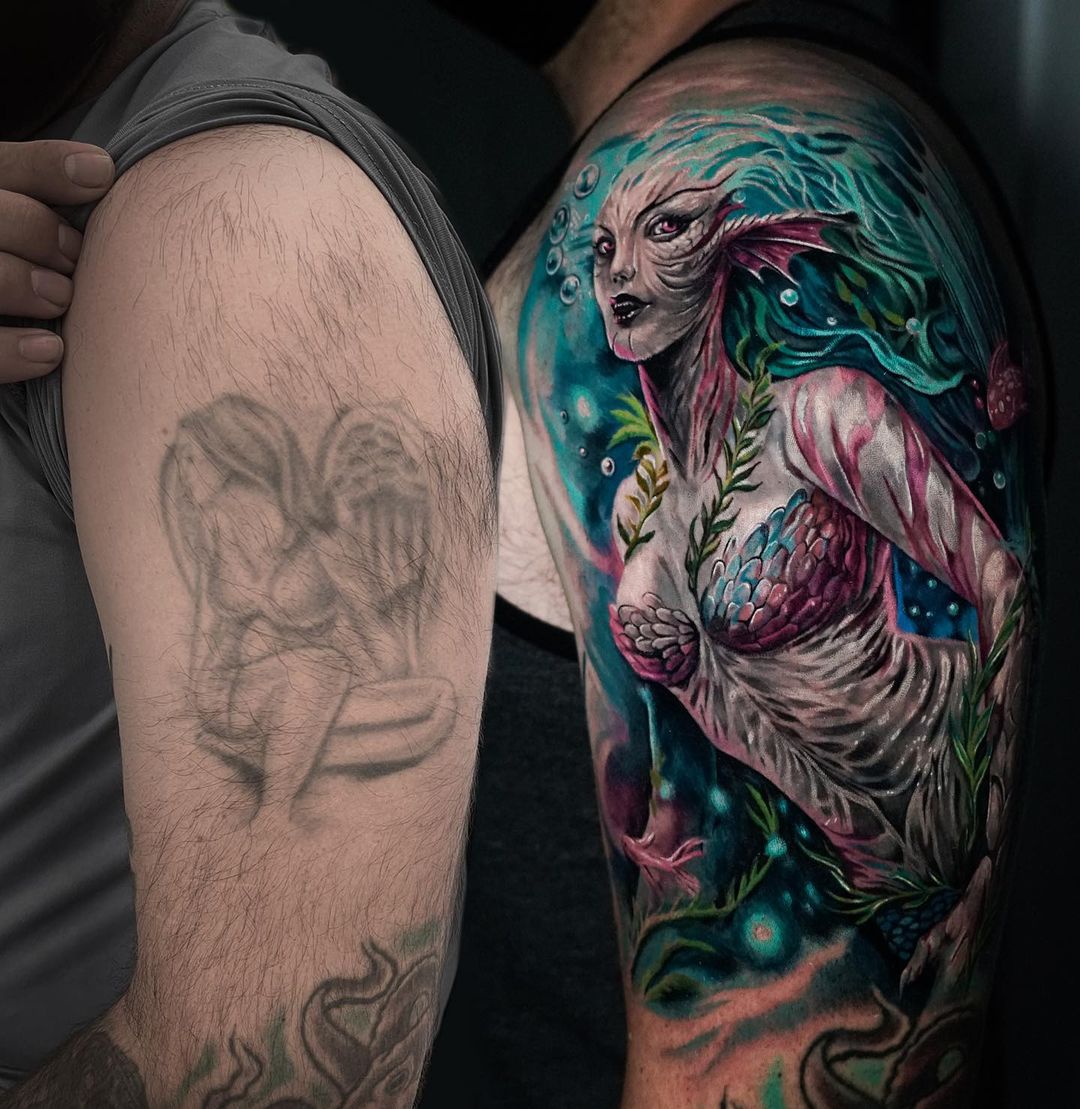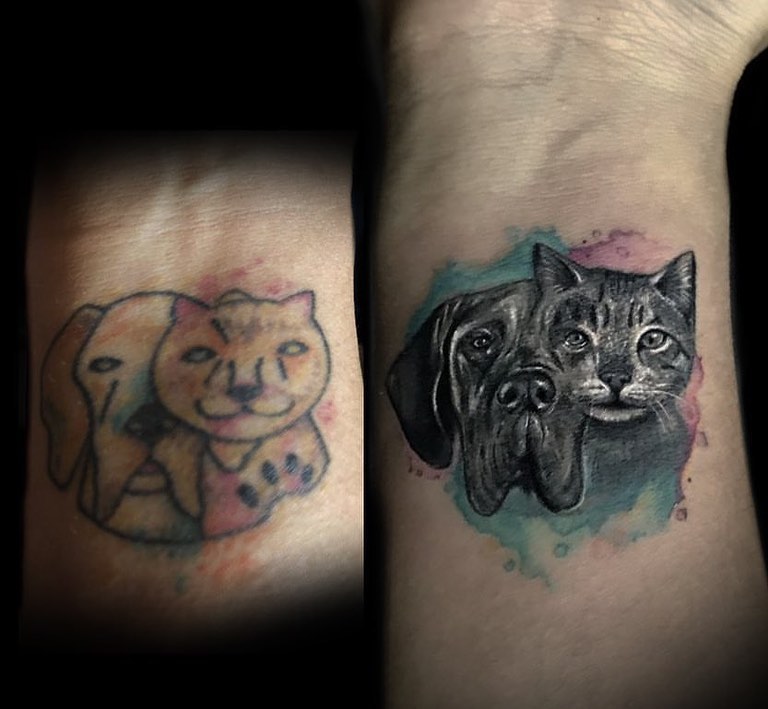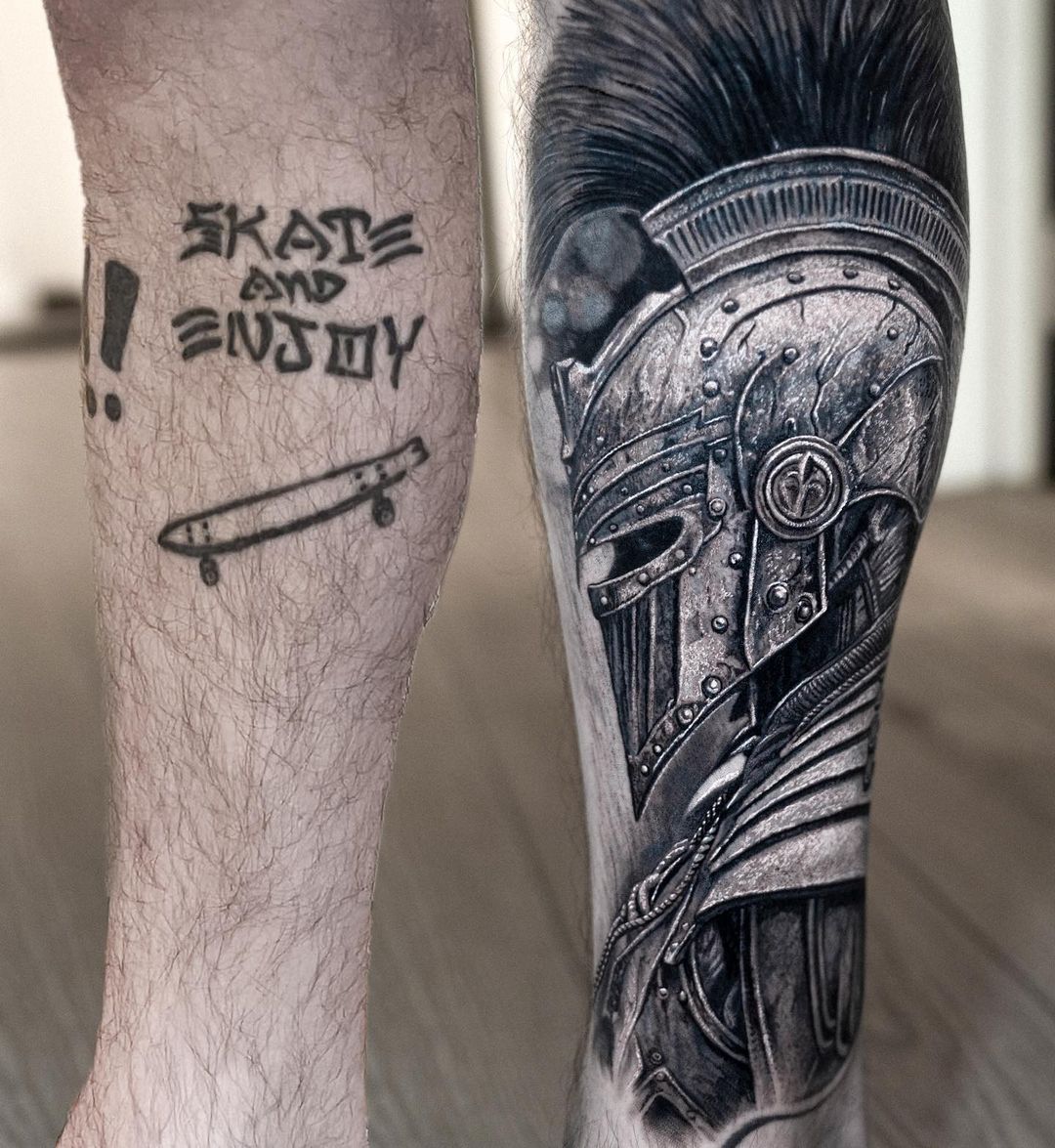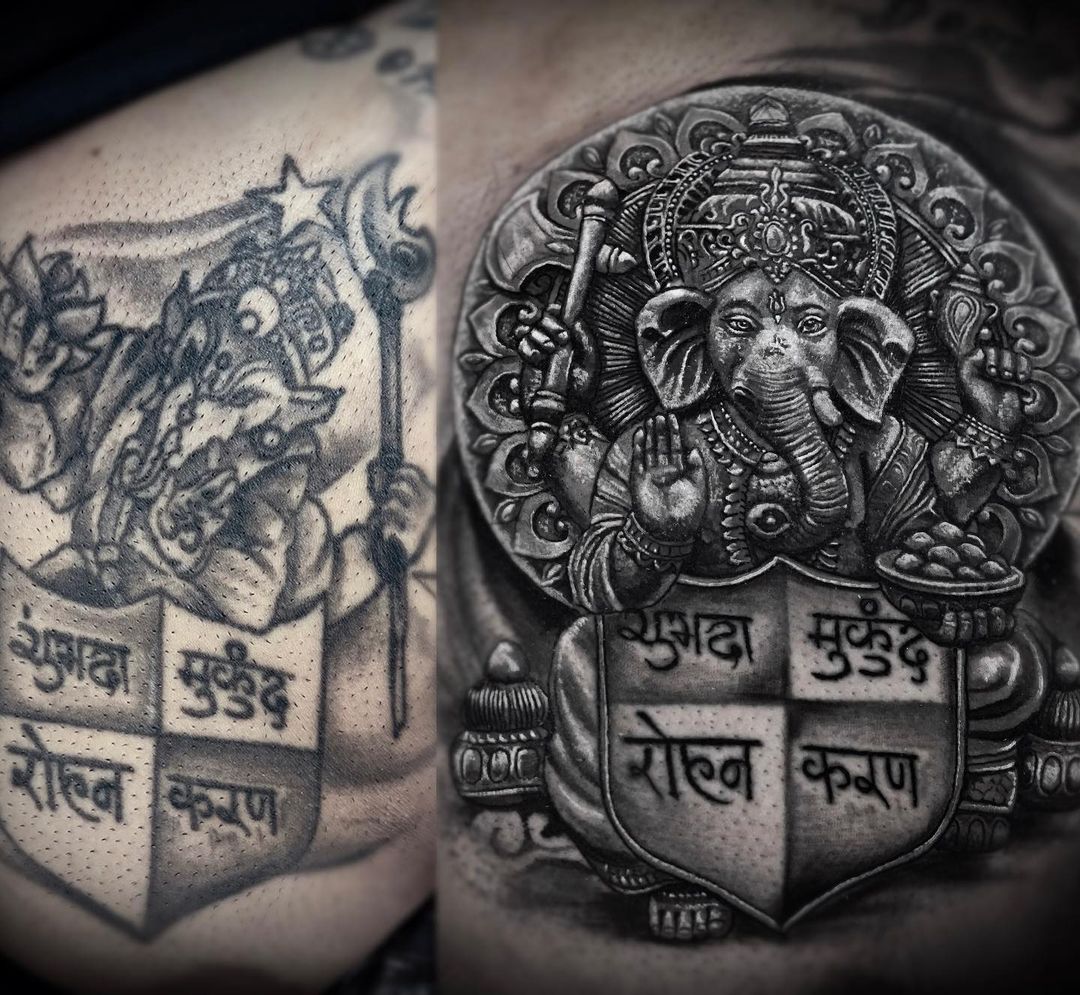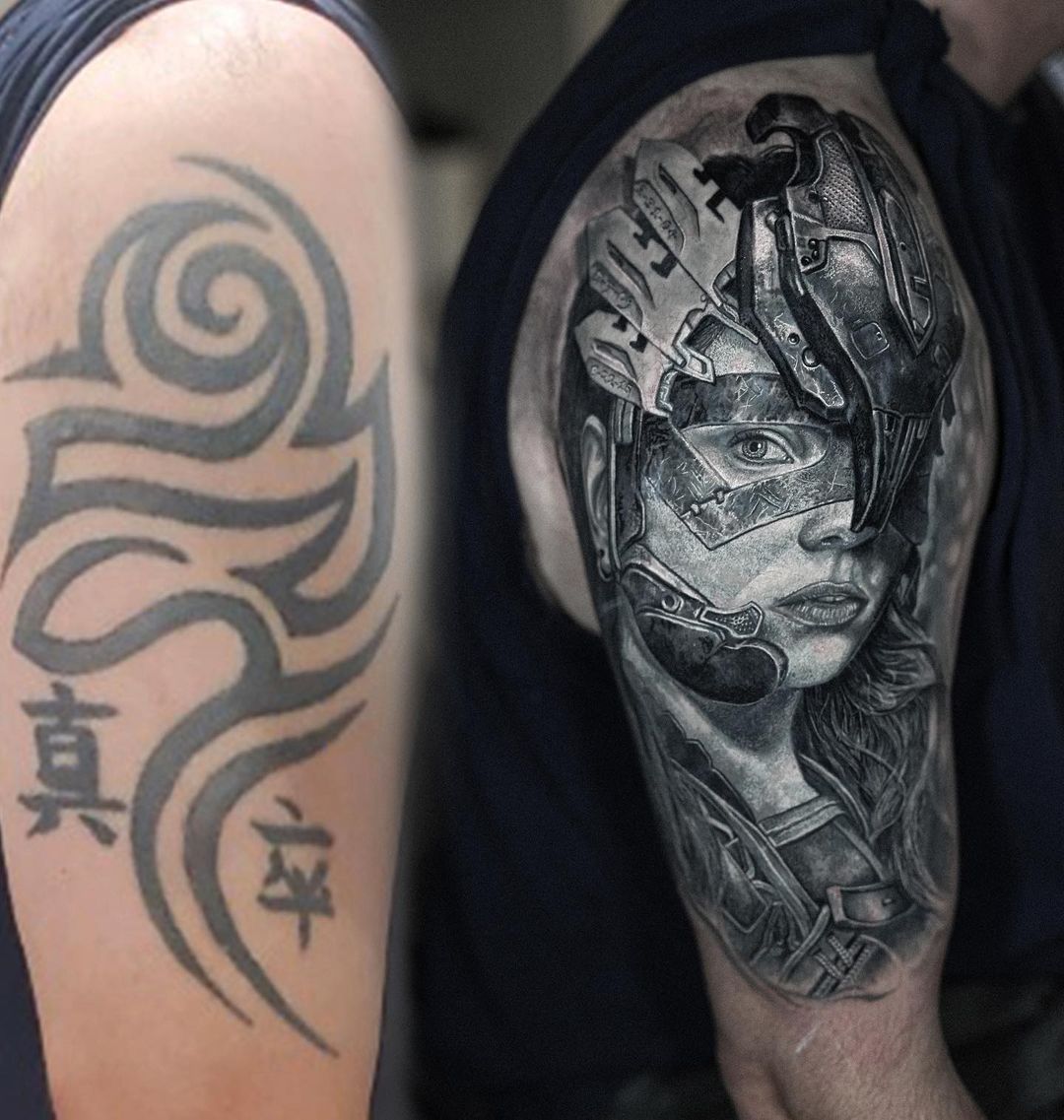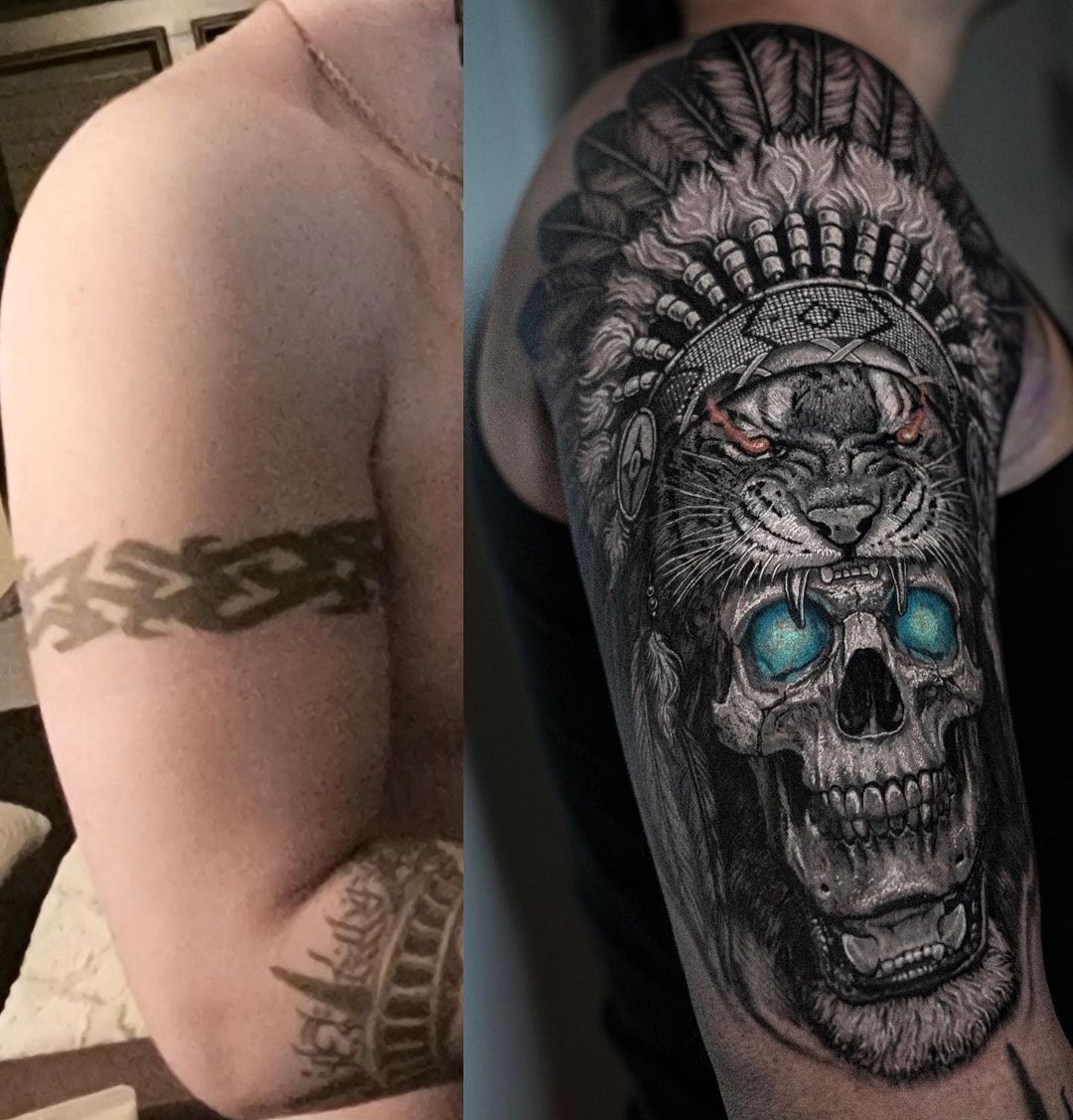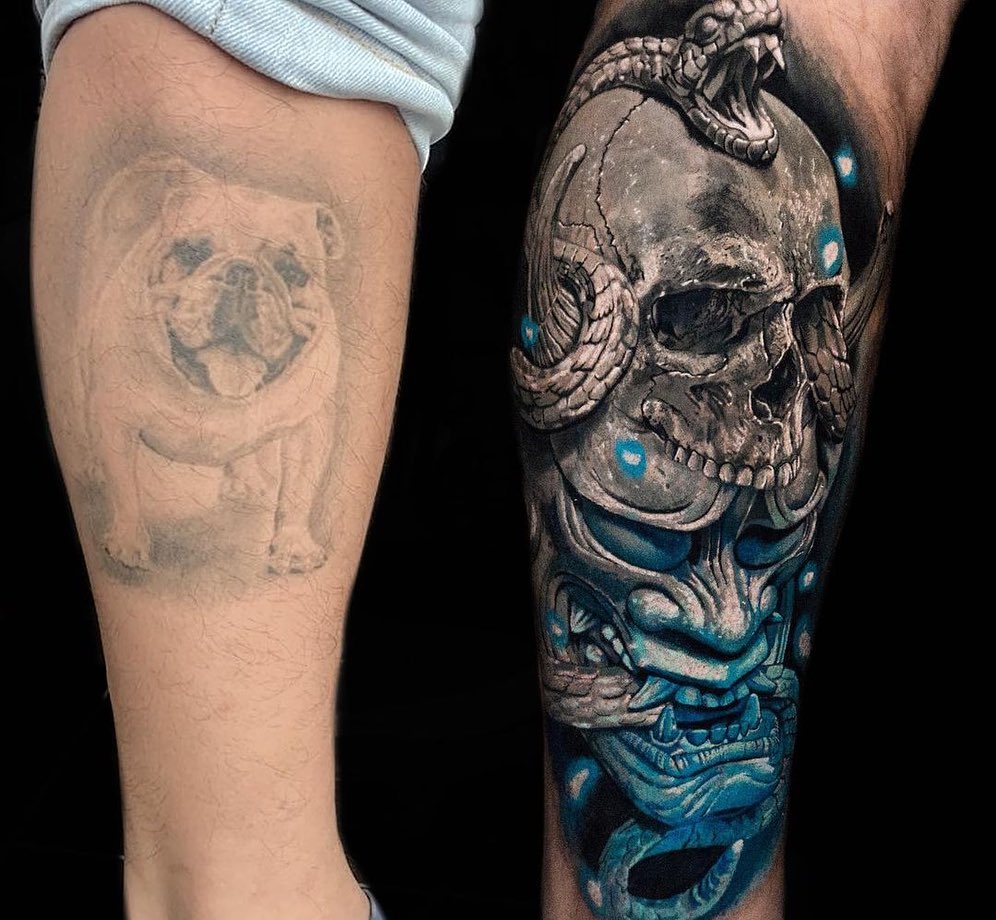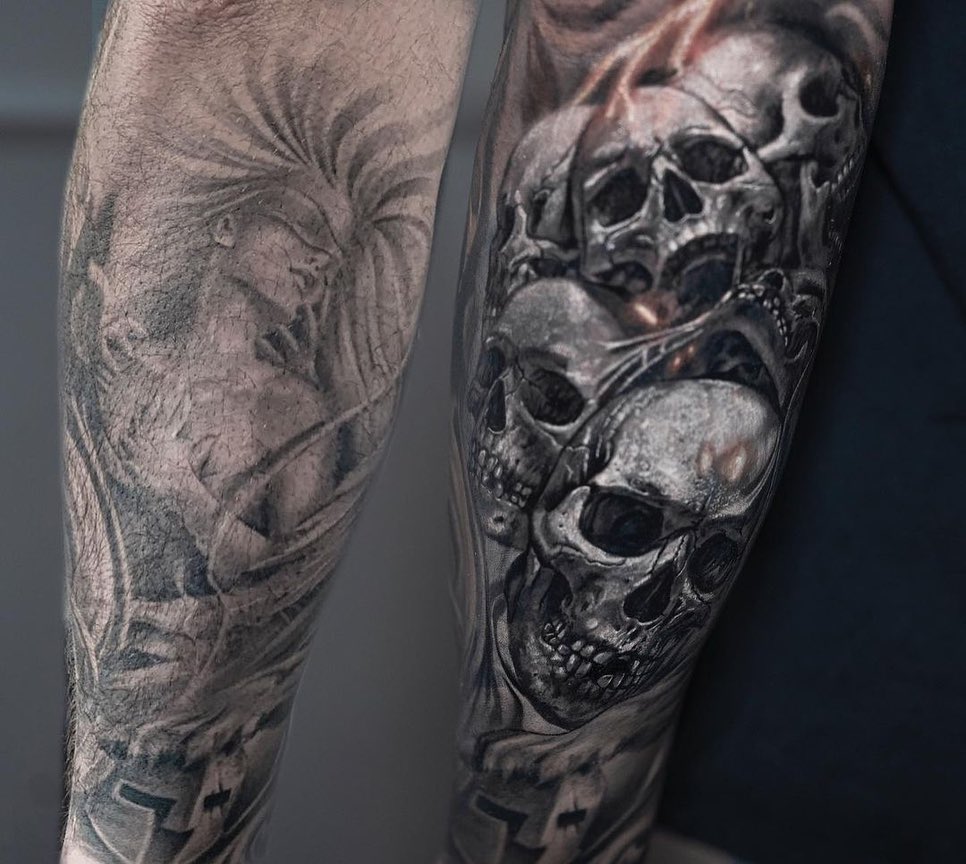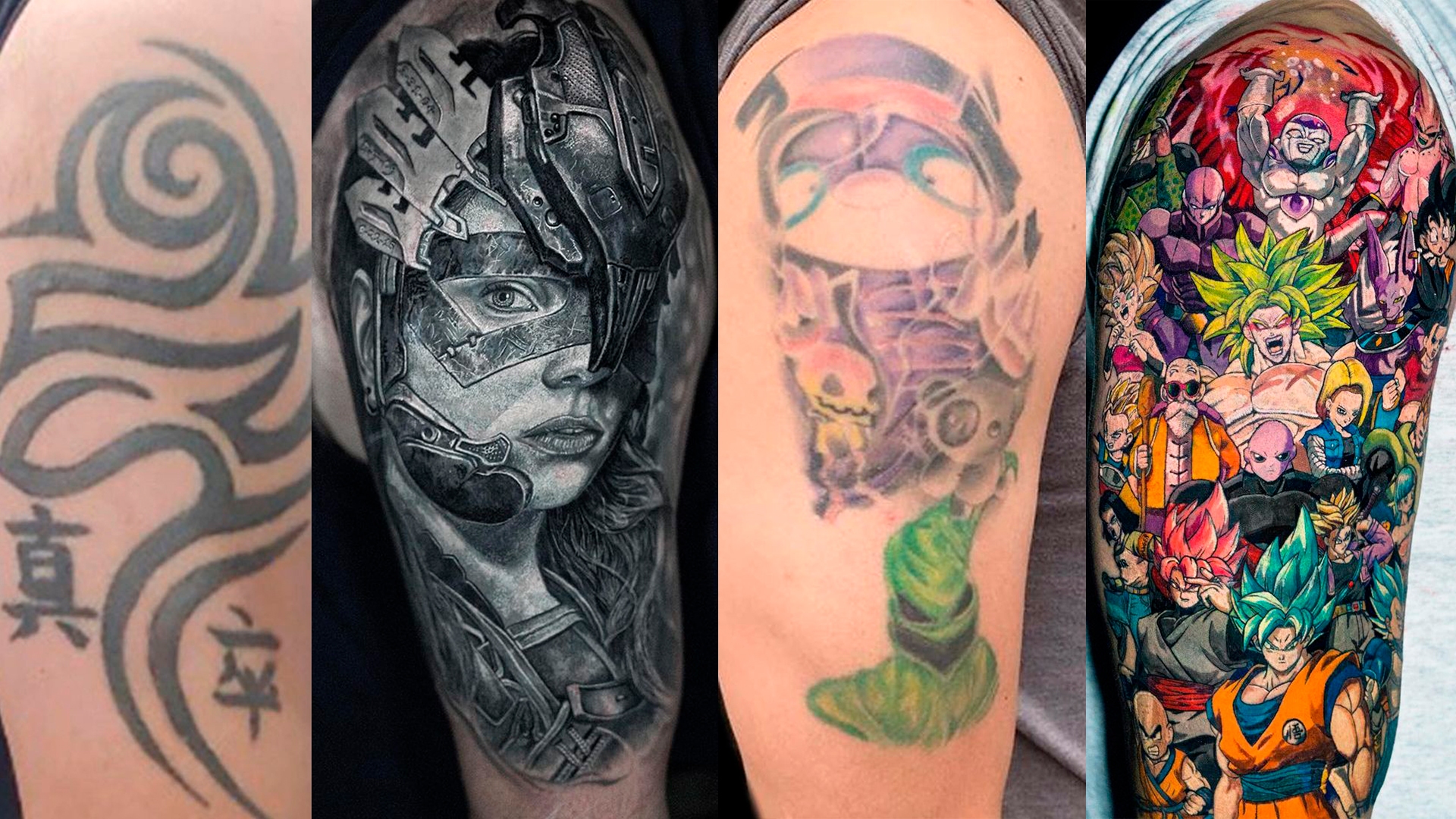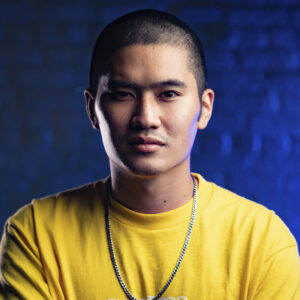Tattoos have long been regarded as a timeless form of self-expression, but sometimes our preferences and perspectives change over time. Whether it’s a design that no longer resonates with you or a decision made in haste, the need to cover up existing tattoos arises. However, the art of tattoo cover-ups is not as straightforward as starting with a blank canvas. It demands expertise, creativity, and a deep understanding of both tattooing techniques and artistic vision. In this blog, we’ll delve into the complexity of covering tattoos with new designs and how I, as a tattoo artist, strive to master this challenging art form.
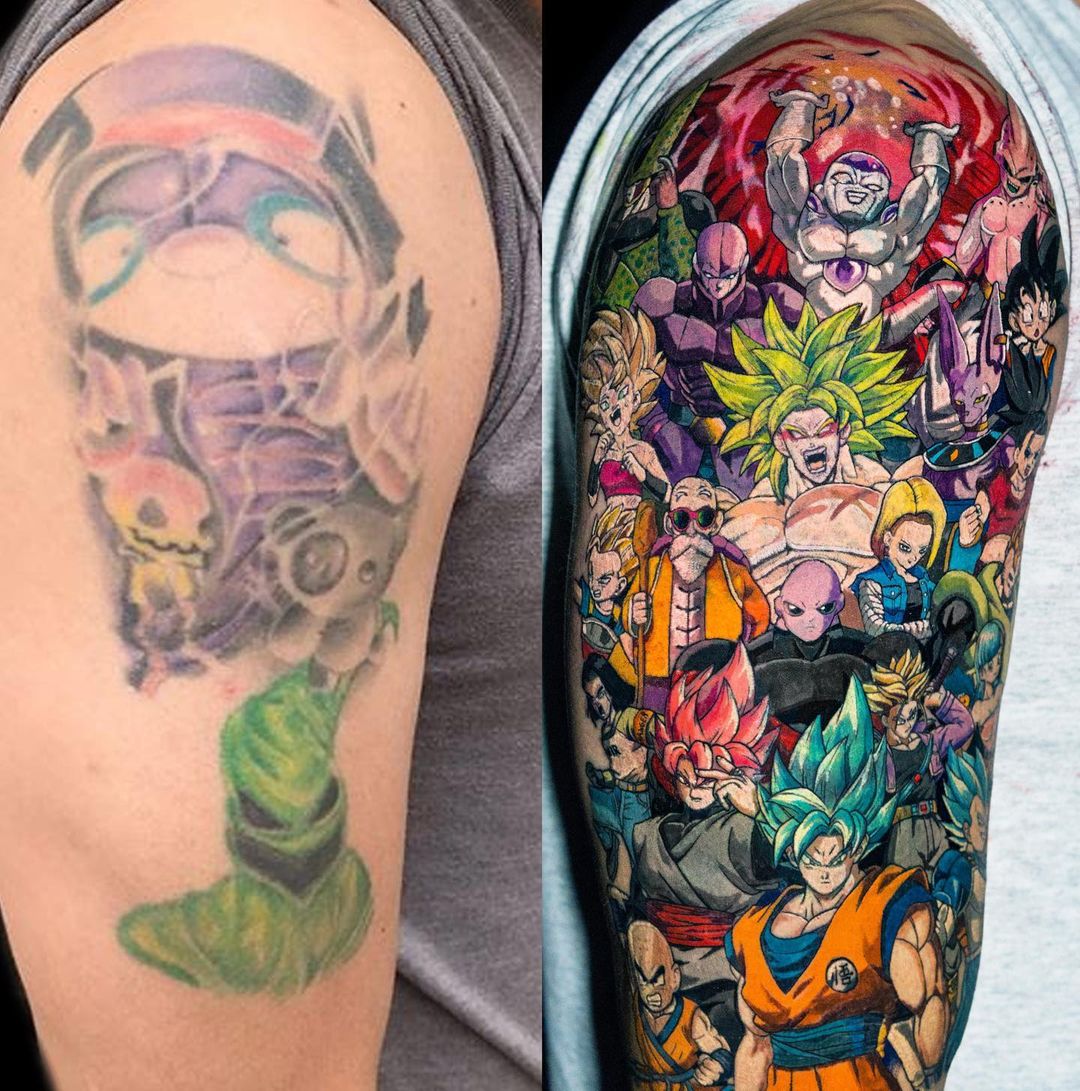
The Complexity of Tattoo Cover-Ups:
Concealing a tattoo with another requires careful planning and execution. Numerous factors come into play, such as the size, color, and style of the original tattoo, as well as the desired design for the cover-up. Elements like shading, contrast, and positioning must be carefully considered to ensure a successful transformation.
One of the biggest challenges lies in dealing with dark and dense tattoos. Black ink tends to dominate the canvas, making it difficult to overlay lighter colors effectively. Additionally, poorly done tattoos may have inconsistent lines and faded ink, further complicating the cover-up process. Achieving a seamless integration of the new design while hiding the old one demands a deft hand and an artist’s keen eye.
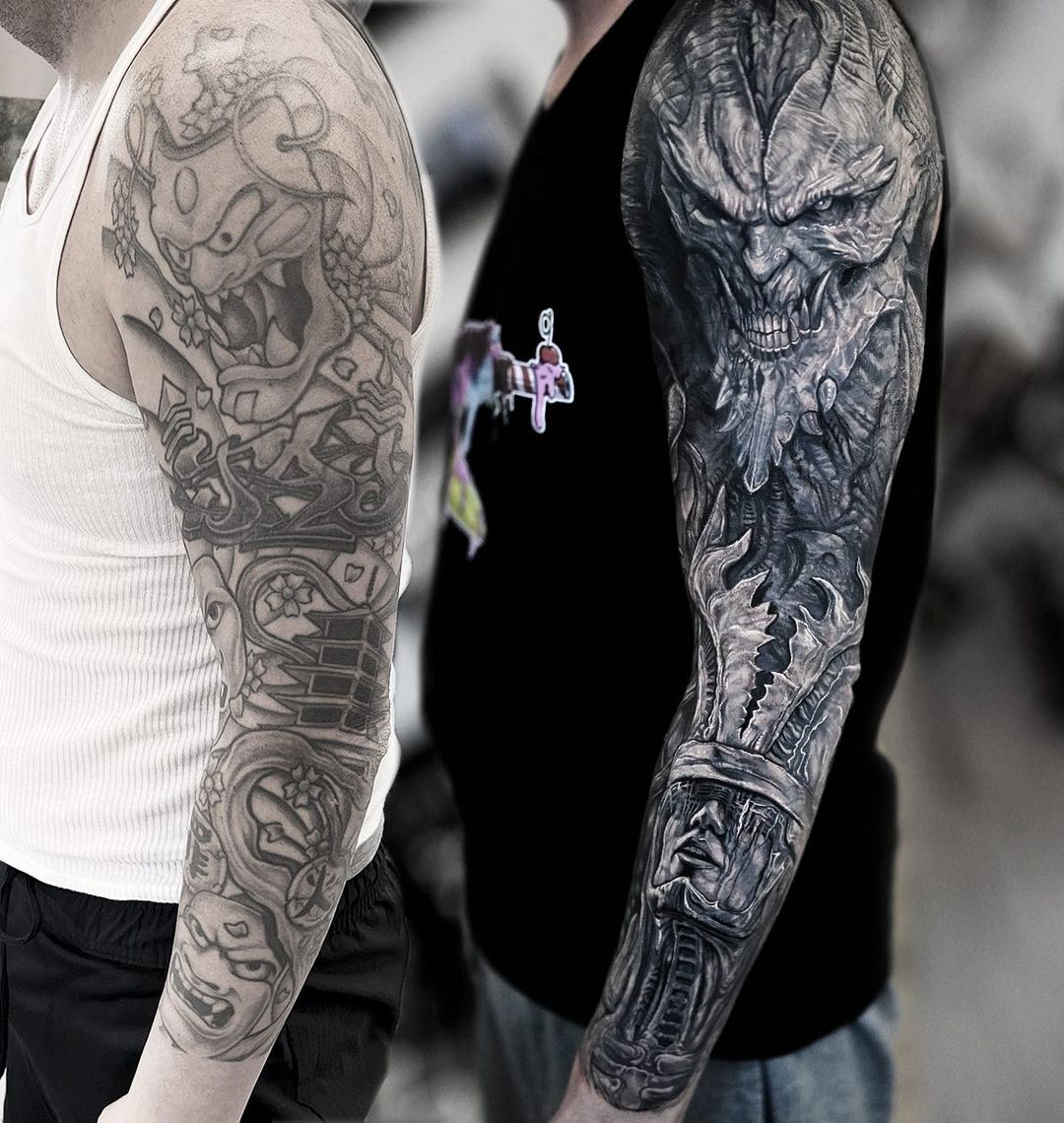
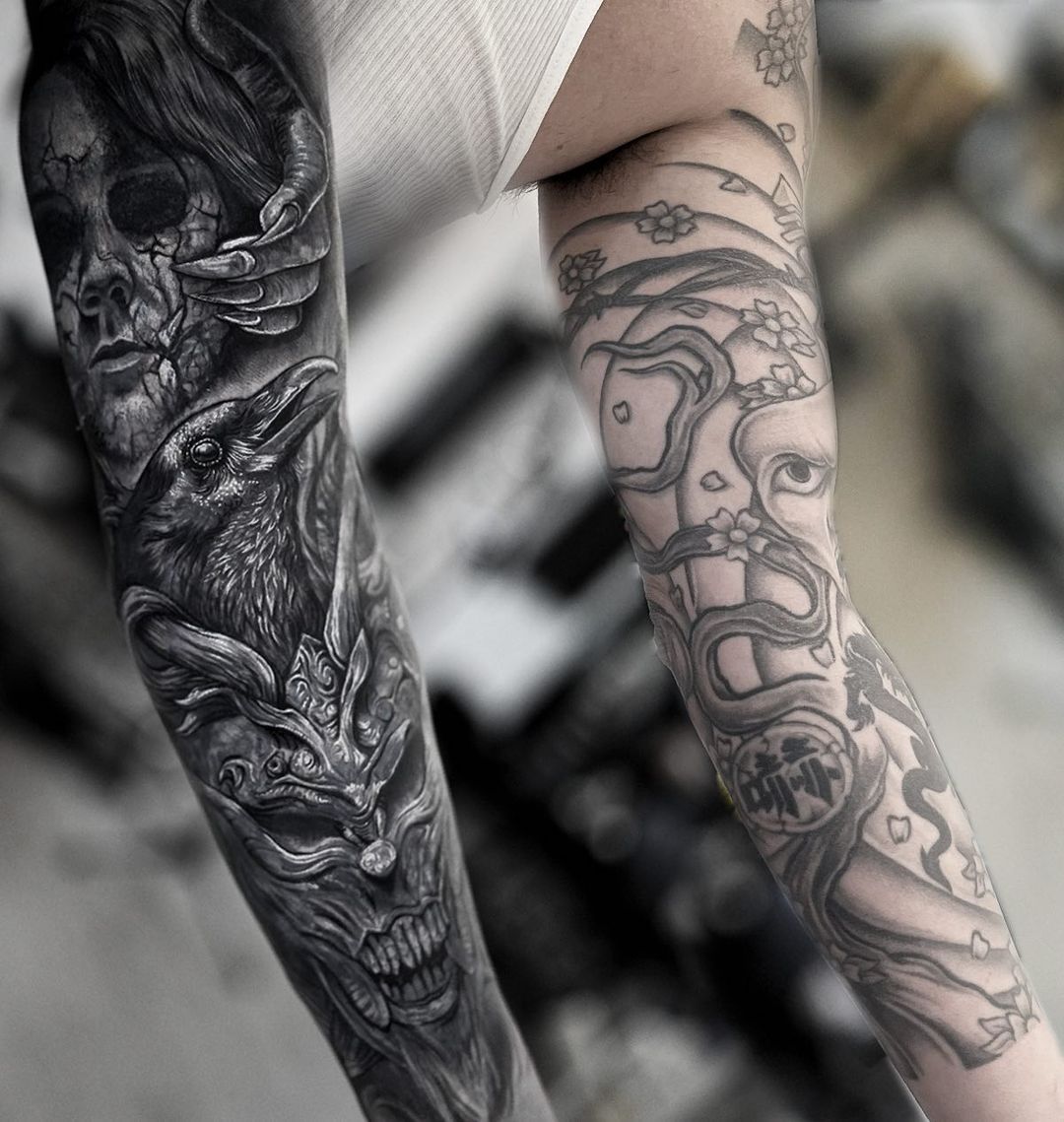
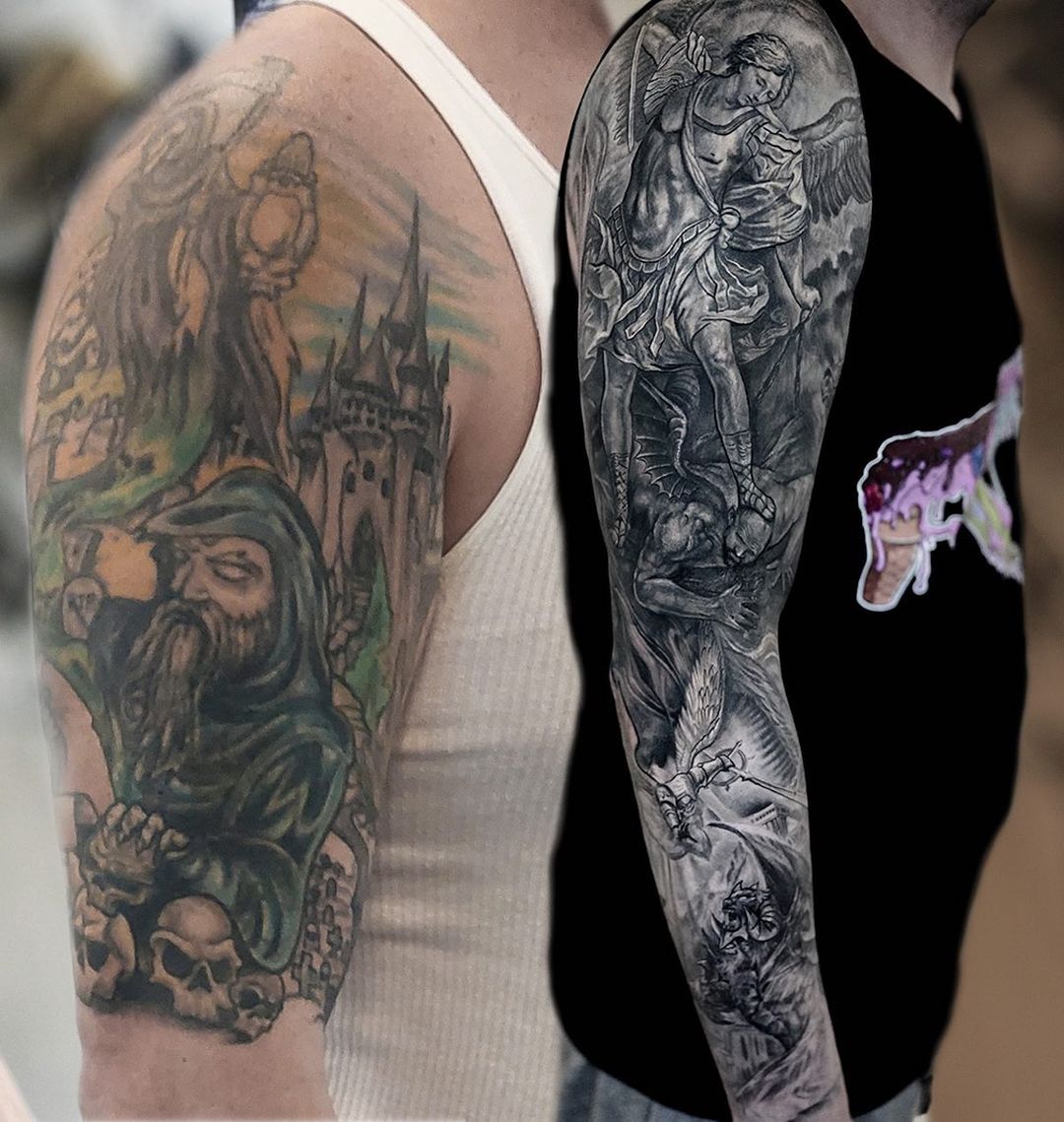
My Approach to Mastering Tattoo Cover-Ups:
As an experienced tattoo artist, I approach cover-ups with dedication and passion. Each cover-up is a unique puzzle to solve, and I thrive on the opportunity to turn old ink into a new masterpiece. My process begins with a thorough consultation, where I take the time to understand your vision, concerns, and expectations. This collaboration ensures that we are on the same page throughout the creative journey.
Next, I meticulously analyze the existing tattoo, paying close attention to its size, color, and design. This evaluation helps me determine the best approach for the cover-up, whether it involves incorporating elements of the old tattoo into the new design or strategically using colors and shading to blend the two seamlessly.
Incorporating the right combination of colors is crucial in the cover-up process. Utilizing a balanced mix of bold and vibrant hues allows me to create a focal point that draws attention away from the old tattoo, redirecting the viewer’s gaze toward the new design. Skillful shading is another essential element in camouflaging the old tattoo, as it helps to add depth and dimension, further enhancing the cover-up’s effectiveness.

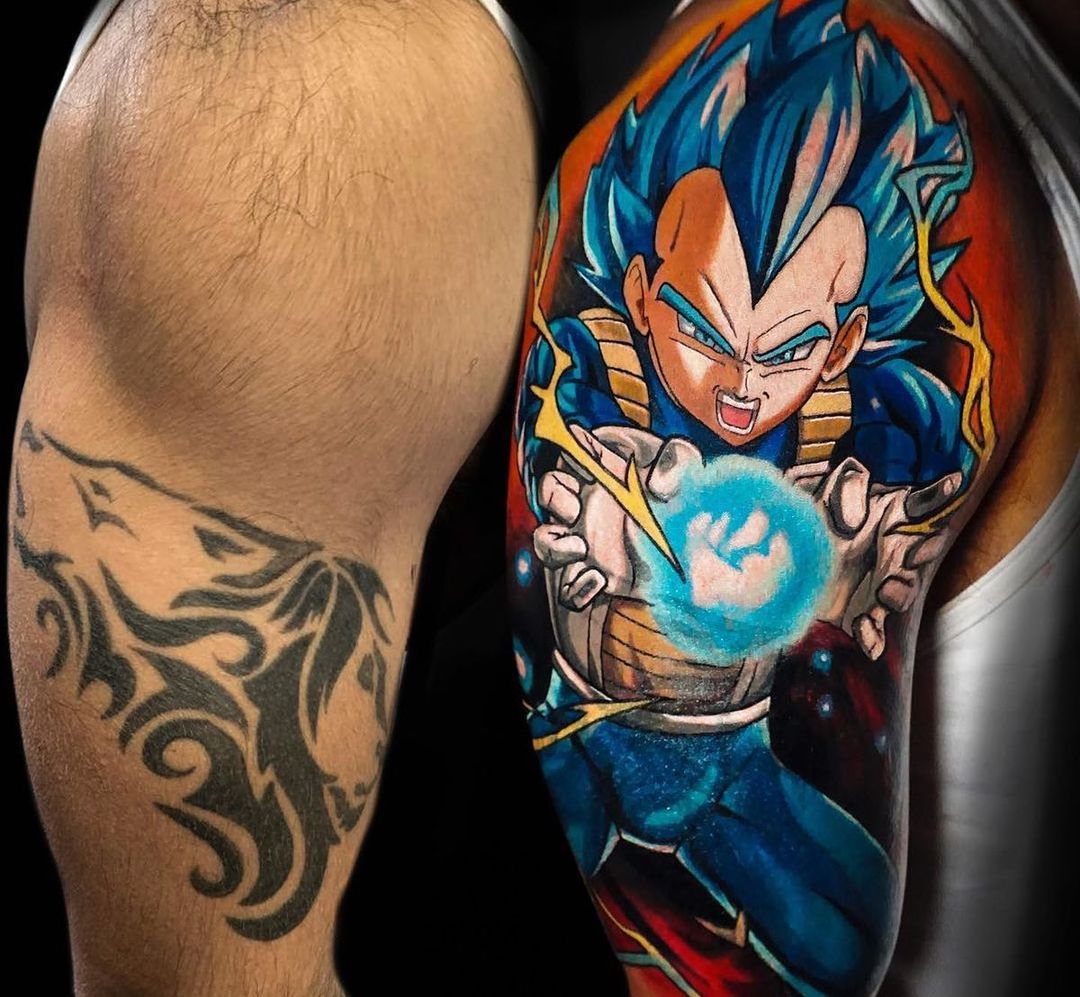

Conclusion:
Tattoo cover-ups are a captivating journey that demands artistry, expertise, and innovation. As a tattoo artist, I find great fulfillment in taking on the challenge of turning old tattoos into fresh expressions of self. Through meticulous planning, creative design, and meticulous execution, I aim to create cover-up tattoos that not only conceal the past but also celebrate new beginnings. Embracing the complexity of tattoo cover-ups allows me to continuously refine my craft and provide my clients with the confidence to wear their tattoos with pride once again. If you find yourself seeking a skilled hand to breathe new life into an existing tattoo, I’m here to embark on this artistic voyage with you. Let’s transform your inked story together!
